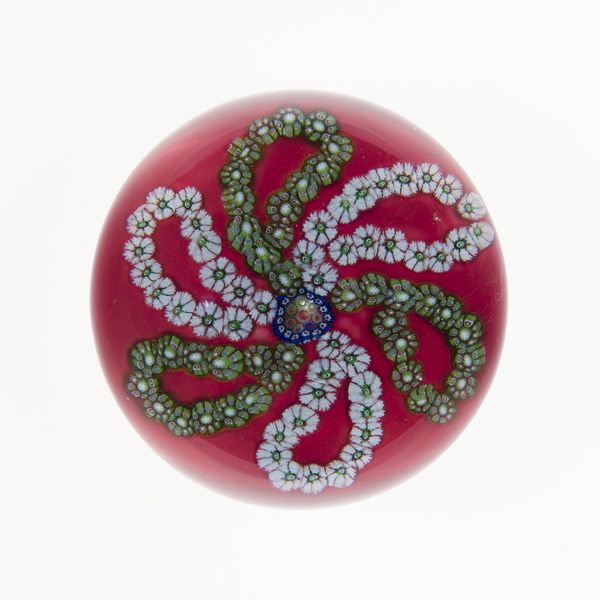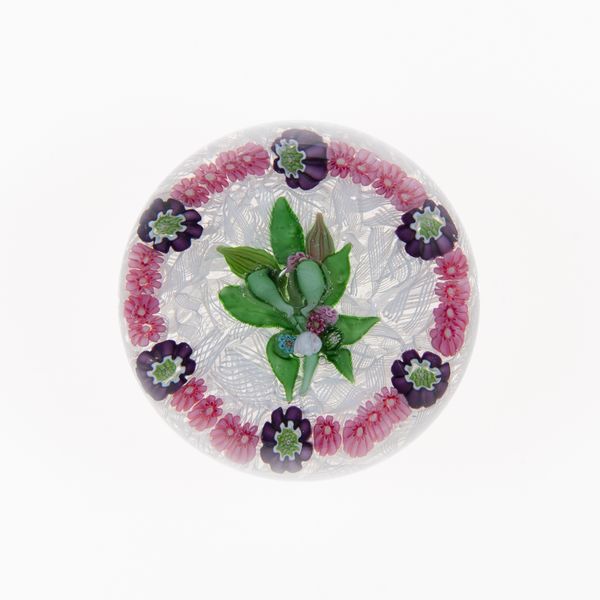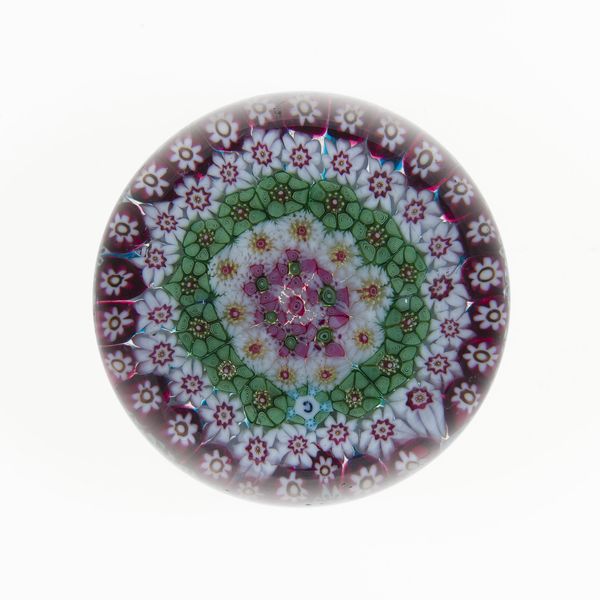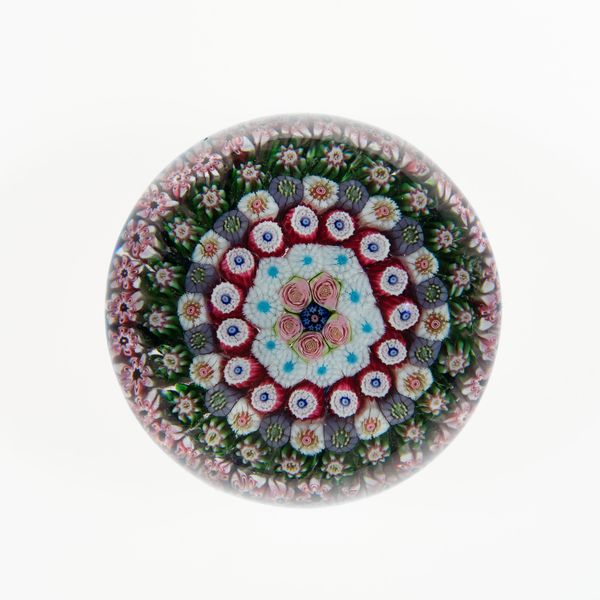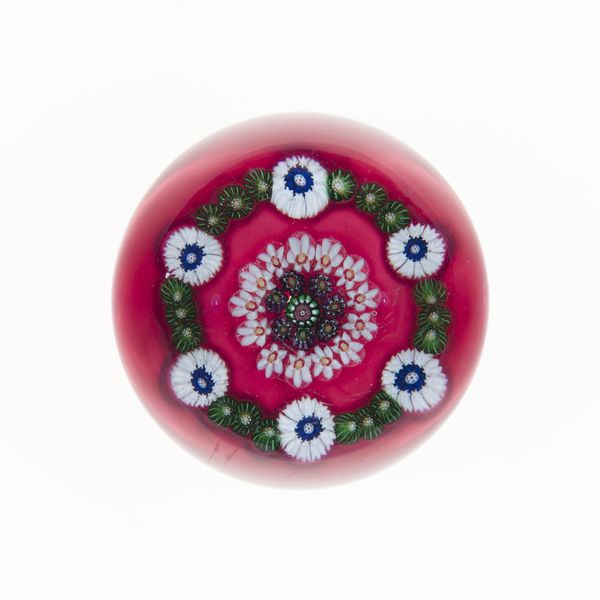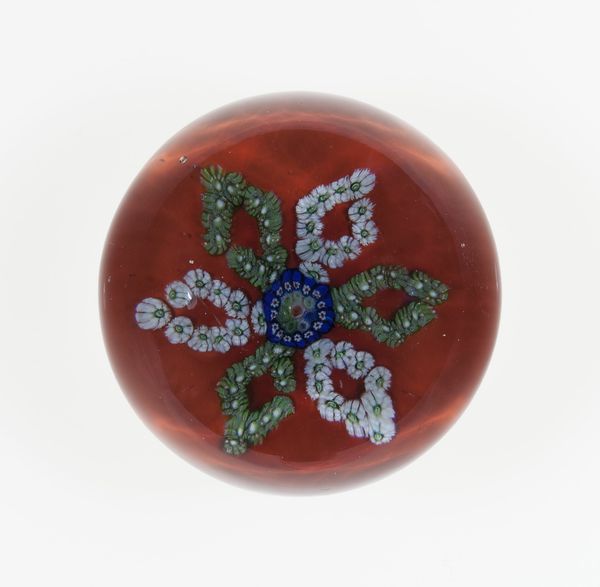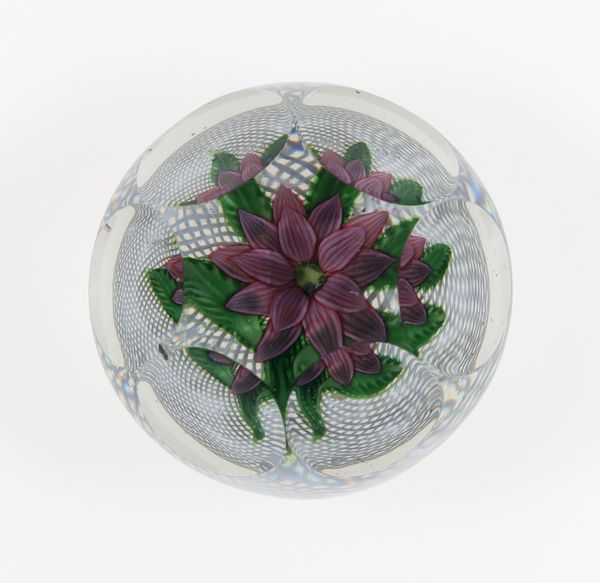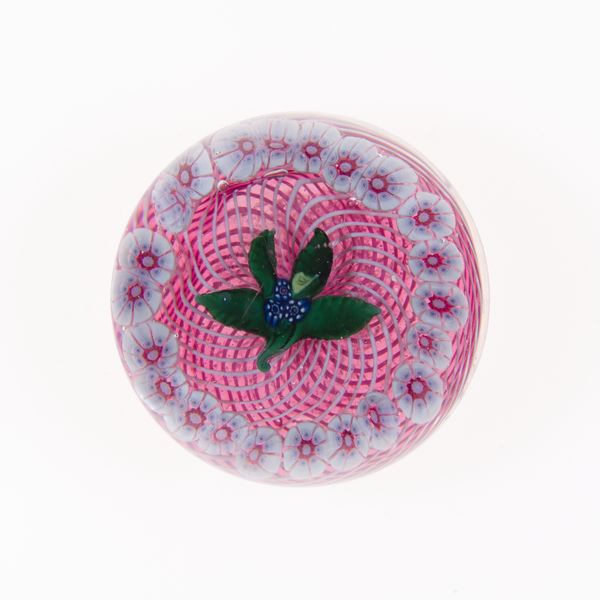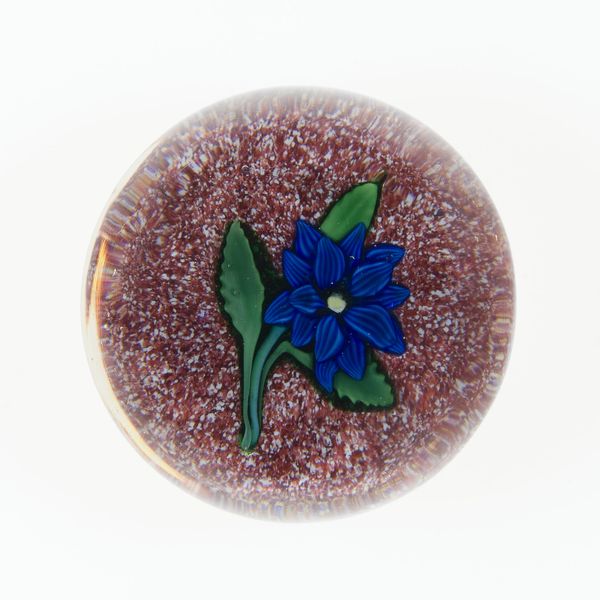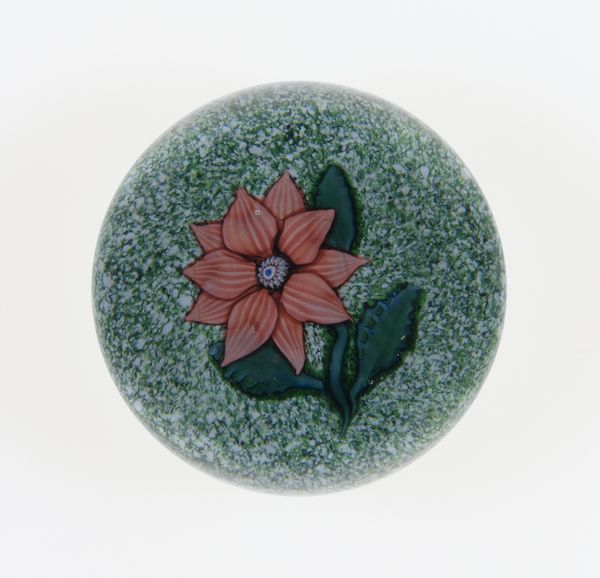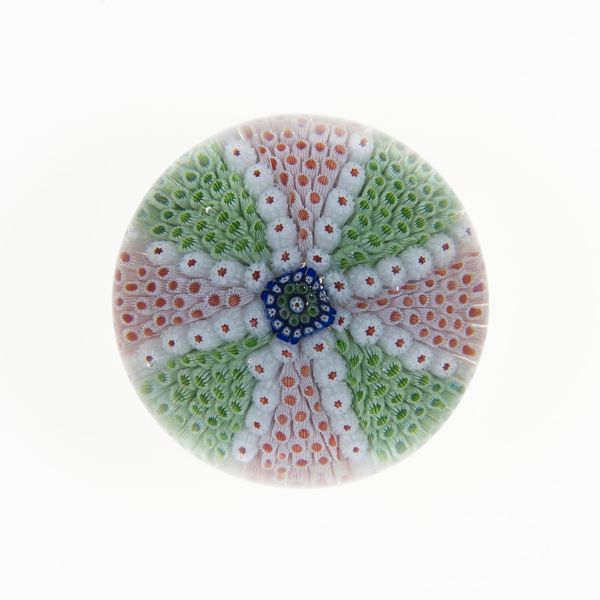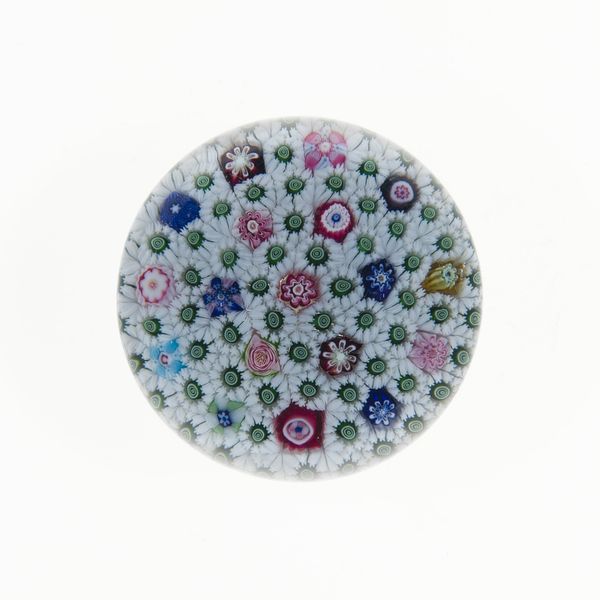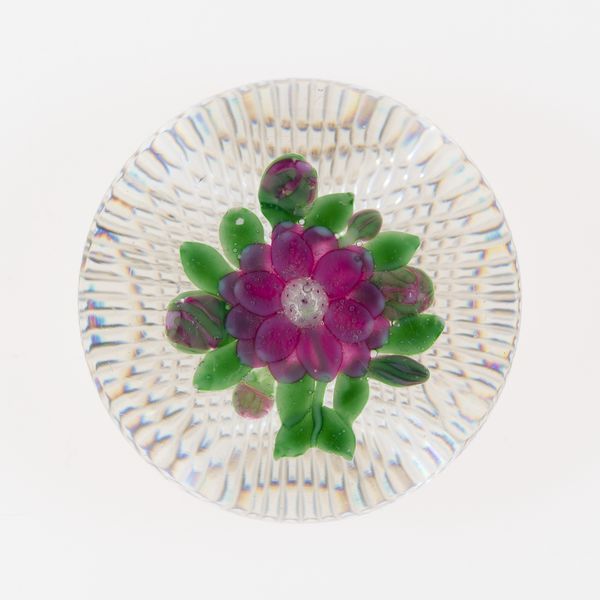
paper, glass, sculpture
#
impressionism
#
paper
#
glass
#
sculpture
#
decorative-art
Dimensions: Diam. 6.8 cm (2 11/16 in.)
Copyright: Public Domain
Curator: Here we have "Paperweight" made around 1870 by the Boston and Sandwich Glass Company. The central image, which resembles a Poinsettia, floats amidst a red, speckled glass matrix. What are your immediate impressions? Editor: It's charming! Almost saccharine with the bright red, yet also constrained. Like a preserved moment—or perhaps a suppressed sentiment—encapsulated in glass. There's a certain fragility and also defiance present at once. Curator: Consider how the glass encases the flower, making the image eternally pristine. It represents a moment frozen, devoid of context, elevated beyond the natural lifecycle, and preserved beyond human life. The flower's survival hinges on being cut off, literally placed on a pedestal. Editor: Right. The act of preservation speaks volumes about how and what we choose to remember. Preserving nature in this way also represents a moment when glass production was more easily accessible for the upper classes and expanding middle classes. Was the aim merely aesthetic, or did it intersect with evolving attitudes towards industrialism and its intrusion upon the pastoral? Curator: A bit of both, perhaps? Glass blowing requires control. This seemingly innocuous object showcases intricate detail that evokes the historical fascination with flowers, emblems, and decorative items which, themselves, function as metaphors and reminders. Editor: These items, such as the poinsettia-like central motif, also reflect seasonal practices and changing holiday rituals; glass becomes an interesting component for reflecting the desire for manufactured beauty or everlasting charm and festiveness within these spaces. What might it reflect about ideas of beauty? Is the symbolism diluted because it’s mass-produced? Curator: Good question! Consider how easily this symbolism became domestic and easily reproduced on an object meant to be on display but also utilitarian, holding down stray papers. What’s fascinating to me is the contrast between this mass-produced beauty and how, today, glass blowing can be considered a rare artform! Editor: This shifts how we reflect on “Paperweight”, and really, these kinds of considerations force us to understand how mass-produced objects enter the personal space. Curator: Absolutely. As viewers, this encourages us to reflect on how we might categorize such everyday treasures as symbols that capture personal moments that can still reflect universal themes! Editor: Beautiful! Thanks.
Comments
No comments
Be the first to comment and join the conversation on the ultimate creative platform.
